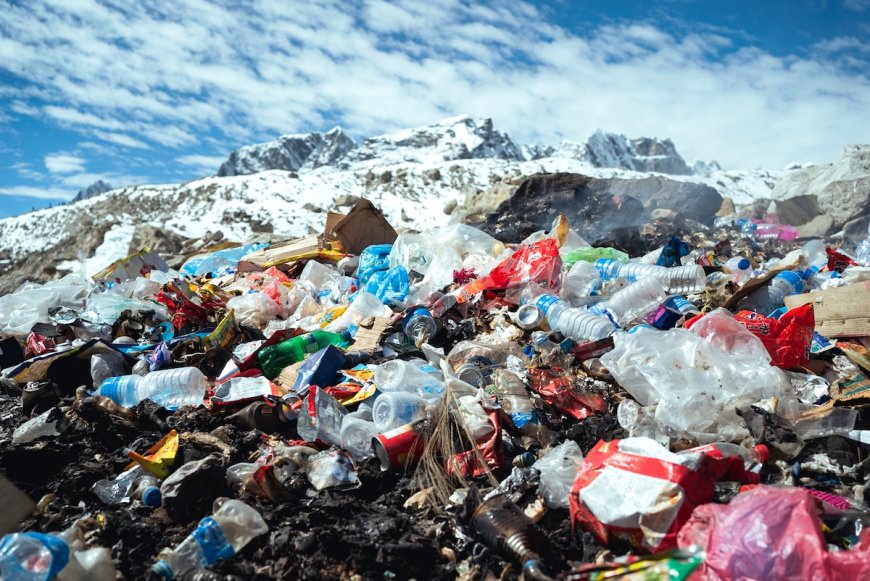Global Plastic Recycling Rate ‘Stagnant’ at 9%: Study
New research has found that the amount of plastic waste being recycled globally has remained “stagnant” at nine percent, with most new plastic continuing to be made from fossil fuels. The plastic recycling rate in the United States is even lower at just five percent. “Plastics are one of the most ubiquitous materials [on] our […] The post Global Plastic Recycling Rate ‘Stagnant’ at 9%: Study appeared first on EcoWatch.

New research has found that the amount of plastic waste being recycled globally has remained “stagnant” at nine percent, with most new plastic continuing to be made from fossil fuels.
The plastic recycling rate in the United States is even lower at just five percent.
“Plastics are one of the most ubiquitous materials [on] our planet, owing to their versatility, durability, and relatively low cost. The global demand for plastics has quadrupled over the past decades and it is projected to double by 2050, resulting in severe impacts on the environment and human health,” the authors of the findings wrote.
Researchers from China’s Tsinghua University said the recycling rate had hardly changed, while plastic production has grown, resulting in a “pressing global environmental challenge,” reported AFP.
The findings come as the Intergovernmental Negotiating Committee for the global plastic treaty prepares to meet again in August following the failure to reach an agreement during the last round of talks.
The annual production of plastics worldwide has experienced a yearly growth rate of 8.4 percent — from two million metric tons in 1950 to 400 million in 2022, the study found.
“Plastic has become an integral part of our lives. Addressing the global environmental concerns of plastics requires a comprehensive analysis along the whole supply chain,” the authors wrote. “Our findings suggest that plastics are subject to geographical concentration, with feedstocks concentrated in oil-resource rich countries and processing in countries with large manufacturing capacity… Income disparities among countries diminish in the context of plastic waste imports, reshaping the global plastics trade patterns. Uncovering the complex plastic supply chain is crucial for reducing pollution and promoting sustainable plastic management.”
For the study, the research team examined international databases, national statistics and industry reports to put together the first detailed analysis of the world’s plastic sector from manufacture to disposal, AFP reported.
The team provided a material flow analysis for plastics linked to global trade in 2022. That year, trade of plastics worldwide was 426.7 million tonnes, with final products accounting for 111 million tonnes.
The researchers found that there had been a major shift in waste disposal, with landfill use decreasing to 40 percent, incineration being used 34 percent of the time and global recycling remaining steady at nine percent.
The authors said that burning plastic was “emerging as the most practiced method for managing plastic waste,” with the world’s highest incineration rates found in Japan, the European Union and China.
Plastics not made with recycled products were produced using fossil fuels — mostly from oil and gas — illustrating what “little progress has been made to reduce the reliance of fossil-fuel feedstocks for plastic production,” the authors wrote in the findings.
“The high reliance on fossil-fuel feedstocks for plastics production will further compromise the global efforts to mitigate climate change,” they added.
Food contamination and labels on plastics made some harder to recycle, while the complexity and diversity of additives in plastic materials was another obstacle.
One of the biggest roadblocks to plastic recycling is that making new plastic is often less expensive than recycling it.
“This economic barrier discourages investment in recycling infrastructure and technology, perpetuating the cycle of low recycling rates,” the authors wrote.
They noted “the significant role” of informal recycling, which could impact the overall recycling rate.
“Informal plastic recycling in the African continent and in other developing countries plays a critical role in waste management, offering both benefits and posing significant challenges. Such waste management practices are often characterized by small-scale, unregulated operations and they provide livelihoods for millions of people,” the authors wrote.
They explained that the informal burning of plastic — primarily in poorer countries where there are no alternatives — worsens air quality, spreads plastic in the environment and exposes workers to toxic chemicals.
“Despite their economic and environmental benefits, informal recycling practices often occur under hazardous conditions that expose workers to health risks from toxins and pollutants,” they said.
The findings, “Complexities of the global plastics supply chain revealed in a trade-linked material flow analysis,” were published in the journal Communications Earth & Environment.
The post Global Plastic Recycling Rate ‘Stagnant’ at 9%: Study appeared first on EcoWatch.



















































